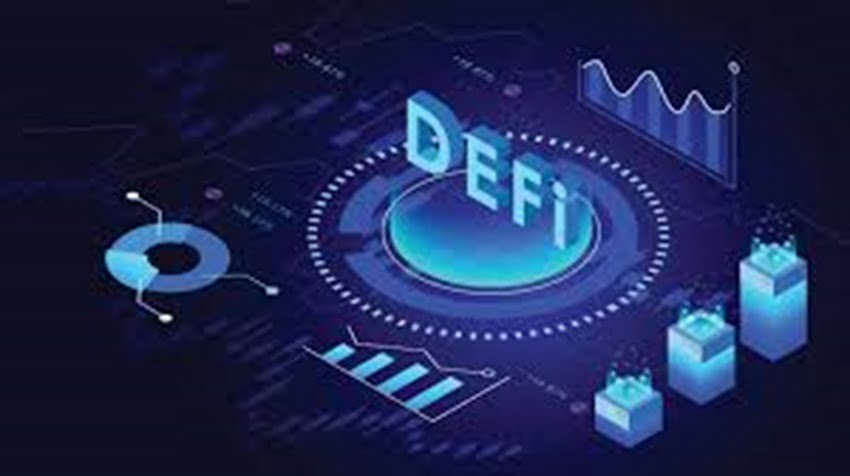Introduction
Decentralized Finance, commonly known as DeFi, is revolutionizing the financial landscape by offering an alternative to traditional banking systems. Unlike conventional banking, which relies on centralized institutions, DeFi operates on blockchain technology, enabling peer-to-peer transactions and financial services without intermediaries. This evolution is not just a technological advancement but a paradigm shift in how we perceive and interact with financial systems.
The Origins of Decentralized Finance
DeFi’s roots trace back to the inception of blockchain technology. Bitcoin, introduced in 2009 by an anonymous entity known as Satoshi Nakamoto, laid the foundation for decentralized currency. However, it was the launch of Ethereum in 2015, with its smart contract functionality, that truly ignited the DeFi movement. These programmable contracts enabled automated and trustless financial transactions, paving the way for a myriad of decentralized applications (dApps).
Key Components of DeFi
At the heart of DeFi are smart contracts—self-executing contracts with the terms directly written into code. These contracts run on decentralized applications (dApps), which facilitate various financial services such as lending, borrowing, and trading. Tokens and cryptocurrencies, often native to their respective blockchains, act as the medium of exchange and value within these ecosystems.
Major Players in the DeFi Space
Several platforms have emerged as frontrunners in the DeFi space. Uniswap, a decentralized exchange (DEX), allows users to trade tokens directly from their wallets. Aave and Compound enable users to lend and borrow cryptocurrencies, earning interest or gaining access to liquidity without traditional banking approval. These platforms, among others, are developed by a community of key influencers and developers dedicated to decentralizing finance.
How DeFi Works
DeFi platforms offer various financial services. Lending and borrowing are facilitated through smart contracts, ensuring transparent and secure transactions. Decentralized exchanges (DEXs) like Uniswap provide a marketplace for users to trade tokens directly. Yield farming and liquidity mining allow users to earn rewards by providing liquidity to DeFi protocols, creating a robust and dynamic financial ecosystem.
Benefits of DeFi Over Traditional Banking
One of the most significant advantages of DeFi is its accessibility. Anyone with an internet connection can participate, making financial services available to unbanked and underbanked populations. Transparency is another key benefit, as blockchain technology ensures that all transactions are publicly recorded and immutable. Additionally, DeFi reduces costs by eliminating intermediaries, resulting in lower fees and more efficient processes.
Challenges Facing DeFi
Despite its promise, DeFi faces several challenges. Regulatory uncertainty remains a significant hurdle, as governments worldwide grapple with how to oversee these decentralized systems. Security is another concern, with several high-profile hacks highlighting vulnerabilities within the ecosystem. Scalability issues also persist, as the current blockchain infrastructure struggles to handle increasing transaction volumes.
DeFi’s Impact on Traditional Banking
DeFi is fundamentally reshaping the traditional banking landscape. By removing intermediaries, DeFi disintermediates banks, reducing their control over financial transactions. New financial products and services, such as decentralized lending and automated market makers, challenge traditional banking models. As consumers become more accustomed to these innovations, their expectations of financial services are evolving, pushing banks to adapt or risk obsolescence.
Case Studies of DeFi Disruption
Numerous DeFi projects are already making significant impacts. For instance, MakerDAO’s stablecoin, DAI, provides a decentralized alternative to fiat-pegged currencies, offering stability in a volatile market. Similarly, platforms like Synthetix enable the creation of synthetic assets, allowing users to gain exposure to real-world assets without traditional financial instruments. These examples demonstrate the disruptive potential of DeFi in real-world applications.
The Future of DeFi
The future of DeFi is promising, with the potential for widespread adoption. As technology advances, scalability solutions like Ethereum 2.0 and layer 2 protocols will enhance the efficiency and capacity of DeFi networks. Regulatory frameworks, once established, will provide clearer guidelines and foster greater trust and participation. These developments will likely lead to a more integrated and accessible financial ecosystem.
DeFi vs. Centralized Finance (CeFi)
While DeFi operates on decentralized networks, centralized finance (CeFi) involves traditional financial institutions that act as intermediaries. The key difference lies in control and transparency; DeFi is open-source and publicly accessible, whereas CeFi is controlled by centralized entities. Hybrid models are emerging, combining the benefits of both systems to offer more flexible and secure financial solutions.
Consumer Adoption of DeFi
For DeFi to reach its full potential, consumer adoption is crucial. User experience improvements, such as more intuitive interfaces and better security measures, will attract more users. Education and awareness campaigns are also essential, as many potential users are still unfamiliar with DeFi concepts and benefits. These efforts will help bridge the gap between early adopters and mainstream users.
Investment Opportunities in DeFi
DeFi presents numerous investment opportunities, albeit with inherent risks. The volatile nature of cryptocurrencies and the nascent state of DeFi protocols pose significant challenges. However, the potential rewards are substantial, with many DeFi projects offering high returns. Investors should stay informed about trends and conduct thorough research to navigate this rapidly evolving landscape effectively.
Real-World Applications of DeFi
DeFi’s real-world applications extend beyond traditional financial services. Cross-border payments, for instance, can be streamlined and made more affordable through DeFi platforms. Insurance products are also being reimagined, with decentralized protocols providing transparent and efficient coverage. Additionally, DeFi offers innovative solutions for savings and investments, enabling users to earn interest on their crypto assets.
Conclusion
The evolution of decentralized finance represents a seismic shift in the financial industry. By leveraging blockchain technology, DeFi offers an inclusive, transparent, and cost-effective alternative to traditional banking. While challenges remain, the potential for DeFi to reshape the future of finance is undeniable. As the ecosystem continues to grow and mature, it will be fascinating to see how DeFi and traditional finance coexist and evolve.
FAQs
- What is DeFi?
- DeFi, or Decentralized Finance, refers to a financial system built on blockchain technology that operates without intermediaries, offering peer-to-peer financial services.
- How does DeFi differ from traditional banking?
- DeFi operates on decentralized networks using smart contracts, whereas traditional banking relies on centralized institutions to manage and facilitate transactions.
- Is DeFi safe?
- While DeFi offers transparency and security through blockchain, it also faces risks such as hacks and regulatory uncertainties. Users should exercise caution and conduct thorough research.
- What are the main benefits of DeFi?
- DeFi provides greater accessibility, transparency, and cost efficiency compared to traditional banking, making financial services more inclusive and efficient.
- How can I get started with DeFi?
- To get started with DeFi, you need a digital wallet and some cryptocurrency. Explore popular DeFi platforms like Uniswap or Aave, and begin by engaging in simple transactions or staking.



